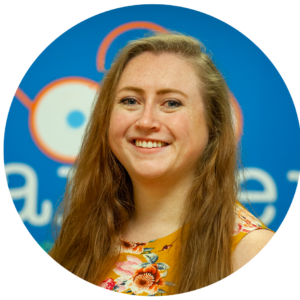Learner Personas
A learner persona is a fictional character developed to represent a group of people in a target audience. A persona set is a collection of several fictional characteristics that describe your target. A learning need is the difference between a person's actual and desired state. The greater the difference, the higher the motivation to acquire new knowledge and skills, and thus purchase the online course.
An analysis of the needs of a learner persona is done to identify problems or gaps in the knowledge of your target audience. Ideally, the results of such an analysis will answer three main questions:
- What are the current indicators? What do the students know before taking the course?
- What are the desired indicators? What outcome do we want?
- What is the reason for the discrepancies between the current and desired indicators?
By answering these questions, you will understand whether this discrepancy can be eliminated with the help of an online course. However, I suggest that you not only answer these three questions but study your potential student in more detail. A deeper understanding of your target learner persona can help you make better design and curation decisions. When you know more about your learners’ knowledge gaps, interests and hobbies, learning preferences and habits, and even the amount of discretionary time for learning, you can offer a product that better meets their needs.
At this point, you might be asking, "how do I create a clear picture of a student if I'm developing a massive open online course (MOOC) for a large number of people?" If you are creating mass learning for many people you do not know, you need to be prepared for the fact that your audience will be diverse, with different learning styles and needs. Furthermore, when creating a massive online project, you will most likely not be able to determine with 100% accuracy who your target audience will be.
Here I will reassure you—this is entirely normal, and from time to time people who are not your target audience will come to you with some discrepancies between course expectations and reality. Nonetheless, let’s jump to the main parameters needed to create a clear picture of your learner.
Learner Parameters
1. Socio-Demographic Characteristics
- Age
Analyze the age range of your target audience. This will determine the format of students' interaction with each other, the language of interaction, the pace of the course, and examples and case studies that you will use to explain the material. - Physical capabilities of the future listener
Think about how your materials and course information will be available to people with disabilities, for example, visually impaired people or people with hearing impairments.
2. Cultural And Linguistic Characteristics Of Your Target Audience
- Whether your listeners will understand cultural references, analogies, and examples
- Whether the style of the presentation and the lecturer's gestures and appearance are understandable and appropriate for the students
- Whether the images you use are appropriate
- Whether the information in your educational product will conflict with the religious and political views of your listeners
3. The Level Of Preparation Of Your Target Audience
Answer the following questions:
- What should the student already know before starting the course?
- What skills and abilities should they already have?
While some students may already know some of the course material, it would be a mistake to assume that all the students are savvy and will quickly understand the information you provide. It is important to consider that students present with different prior knowledge and learning styles. There are also questions about access to the course materials:
- Are there any special internet requirements?
- Do your students need to buy special equipment?
- Will your students be able to afford the necessary equipment?
- Will students be able to access the content from anywhere in the world?
It is important to inform your students about any free resources, educational or financial, to aid them with the course.
4. Interests, Hobbies, And Media
By understanding the interests, hobbies, and preferred media of your students, you will be able to speak "their language" as well as design lectures and projects that resonate with them. If you can use examples, materials, and learning prompts from their "world," you will be more likely to provoke a positive, lasting response.
5. Learner’s Needs
Last but not least, it is important to study the needs of the potential student. Without analyzing your student's needs and goals for taking the course, you will not be able to create appropriate objectives and outcomes, and this would mean that the project itself is doomed to failure.
How To Create A Learner Persona Portrait
Here are some ways to collect data to create a learner's portrait:
1. Survey
Create a survey. The questions in it should be simple. It is desirable to prepare answer options and leave a few questions at the end for more detailed answers.
2. Individual Interviews
Arrange individual interviews with some representatives either in person or via live broadcast. Ask questions about their educational and career goals and challenges.
3. Group Discussions
Group discussions are frequently used as a qualitative approach to understanding existing issues in-depth. The method aims to obtain data from a purposely selected group of individuals, rather than from a statistically representative sample.
4. Explore Existing Data
Existing data can serve as an indicator of current needs.
What Kind Of Questions To Ask
- What is your name?
- What are your contact details?
- How old are you?
- What do you do for a living?
- What is your income level? (anonymously)
- Where do you live?
- What channels for receiving and transmitting information do you most often use?
- Name three or four of your personal qualities (e.g., active, goal-oriented, tech-savvy, etc.)
- How do you like to study? (in a group, as a couple, individually, etc.)
- How do you best perceive information? (visual, auditory, in diagrams and tables, through stories, through play activities, etc.)
- What are your professional and life goals?
- What is your motivation for starting this course?
- What skills do you already have to help you achieve your goal?
- What skills do you currently lack to achieve your goal?
- What are your expectations from the learning program?
- What prior knowledge about the topic do you already have?
- What is your experience with the subject matter? (note that here, practical experience may lack structured theory and vice versa)
- Why do you think you need this training?
- Why do you think this training is valuable or important?
- What are your beliefs or fears about the subject matter?
- Under what circumstances will you use what you have learned?
- What happens if you do not complete the course?
- What can prevent you from completing your training?
- What can help you complete the training by the designated time?
- What are your hobbies, and what inspires you?
- How do you spend your free time, away from work and study?
- Tell us about your favorite games, books, and TV shows?
- What can tire you and take away your energy?
- When do you plan to set aside time for studying? How many times a week? With what intensity?
You can find a step-by-step template "Learner Persona Portrait" here. Once you have the answers to these questions, you will be able to fill out this template.
Conclusion
Remember! It is better to make several portraits. Do not hesitate to do it. Knowing your target learner on a deeper, more complete level is always a great idea. The more details you consider in a portrait, the higher the chance of creating a compelling, engaging, and popular learning program. Moreover, having a clear portrait of a potential student in front of your eyes helps create a more effective advertising campaign. By following the steps given above, you will be able to create an accurate learner persona portrait and launch a successful course. Best of luck!










